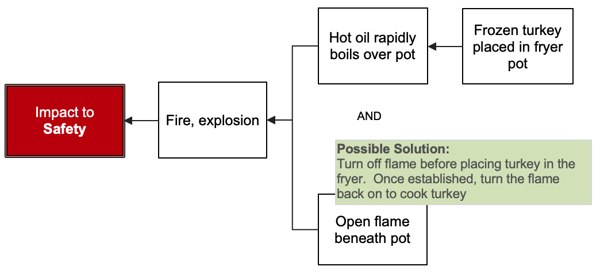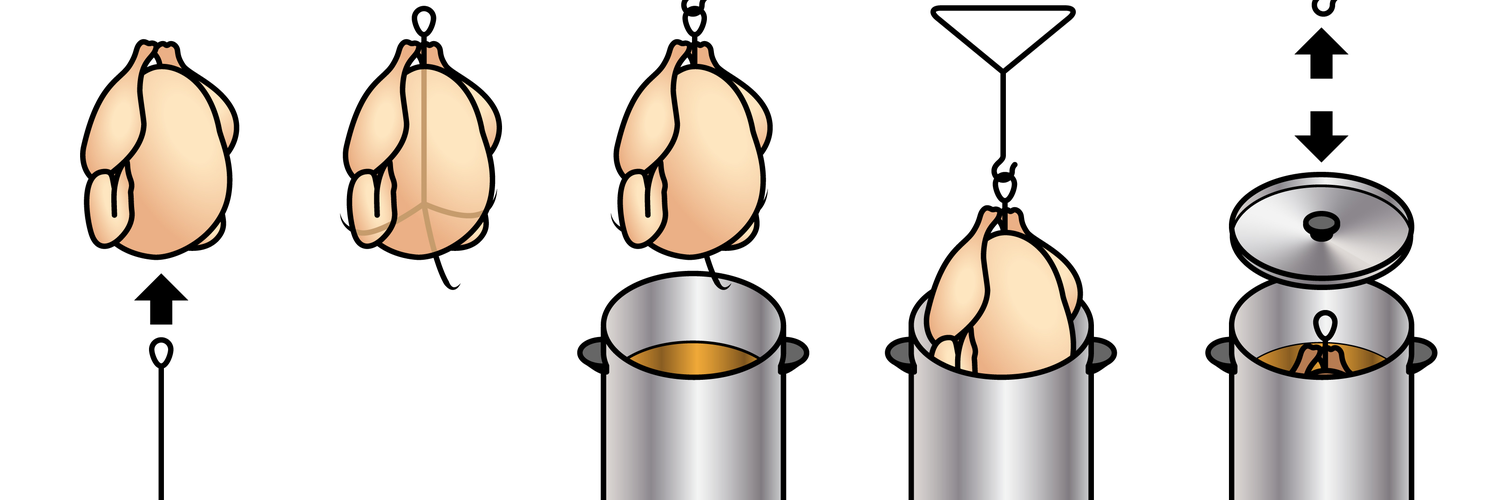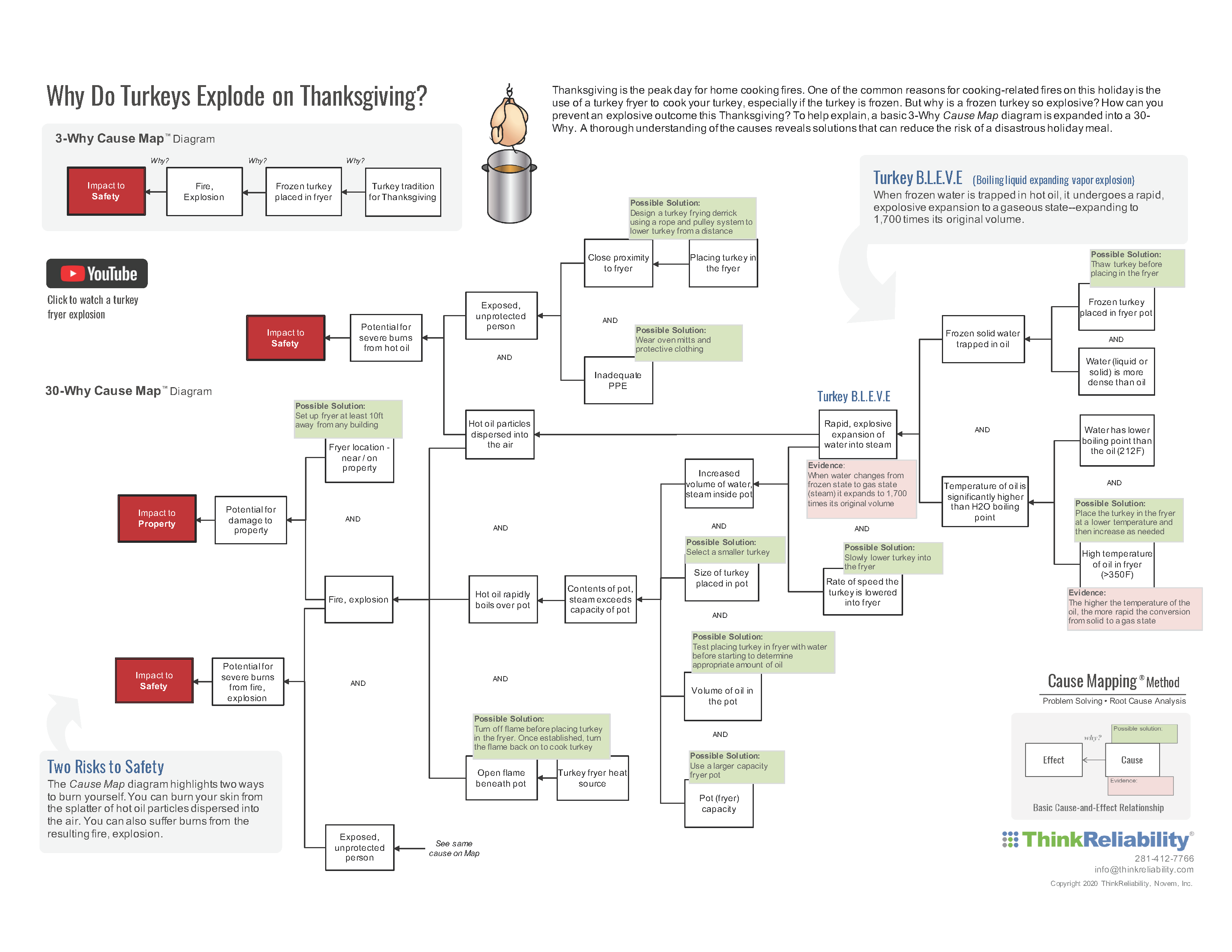I challenged you to build a Cause Map™ diagram that provides a more thorough explanation of why a frozen turkey being deep fried will most likely explode into a fireball. Thank you to those of you who sent in your Maps! Mapping out a scenario like this is the best practice for getting better at building Cause Map diagrams.
For those of you who accepted my challenge, you may have learned that it isn’t quite as straightforward is it might seem. This highlights one of the key (and subtle) benefits of building the Cause Map diagram. By requiring you to validate the cause-and-effect relationships, the Map forces you to thoroughly understand exactly how something happens. I often find that when I read an explanation for an incident like this, it makes sense. However, when I actually attempt to lay out the cause-and-effect relationships, I quickly realize that my understanding is not quite what I thought it was. It is easy to gloss over some of the specific details and minor nuances that are necessary to truly understand what is taking place. Often, this additional detail will reveal other creative ways to prevent the incident from occurring.
Using the turkey fryer explosion as an example, we can begin with a simple 2-Why Cause Map diagram. This is accurate, just not very thorough. Asking HOW does a frozen turkey in a fryer pot cause an explosion challenges you to dive in for a deeper understanding.

The Ignition Source
For example, take the ensuing fire that occurs when you place the frozen turkey into the pot. We are all aware that fire requires an ignition source. Can you explain the ignition source in this instance? Watching a video of the incident, it appears that the oil in the pot might self-ignite. However, that is not what actually happens. The ignition source is most commonly the flame beneath the pot. When the oil mixture in the pot overflows and disperses into the air it makes contact with the flame below. This explains why a possible solution might be to temporarily turn the flame off when you place your turkey in the pot. It might still overflow, but at least you will have reduced the risk of a fire and explosion.

BLEVE
Next, consider what exactly causes the oil to rapidly boil over the pot? The reason is a BLEVE (boiling liquid expanding vapor explosion). In this case, when you introduce the frozen turkey, frozen water on the turkey is trapped in extremely hot oil. This causes a rapid, explosive change of the solid water to a gaseous state (steam). When this change occurs, the water expands to approximately 1,700 times its original volume. This significant increase in volume as it attempts to escape the oil, along with the added volume of the turkey, causes the oil to overflow. The causal relationships represented below highlight what is required for this reaction to occur.

At this point, you can begin to see the potential for more a thorough understanding of what takes place, and yet, this is still only a partial representation of the causes required to produce this incident. All three Cause Map diagrams above are accurate, but as you add more detail, you gain a clearer understanding of the incident and its causes.
The Cause Map diagram at this stage is accurate, but I have additional questions that would help me better understand the issue and further mitigate the risk of occurrence. How would the rate at which you introduce the turkey into the hot oil affect the outcome? How would other recommendations reduce the risk of the explosion? And even if the explosion still happens, how can you mitigate the consequences (personal injury or property damage)?
To see the answers, download the PDF of the detailed, 30-Why Cause Map diagram by clicking on the image below. By understanding how these recommended solutions control the causes, you can be assured to reduce the risk of an unfortunate holiday disaster.
And if you accepted my challenge last week, how does your Cause Map diagram compare?












